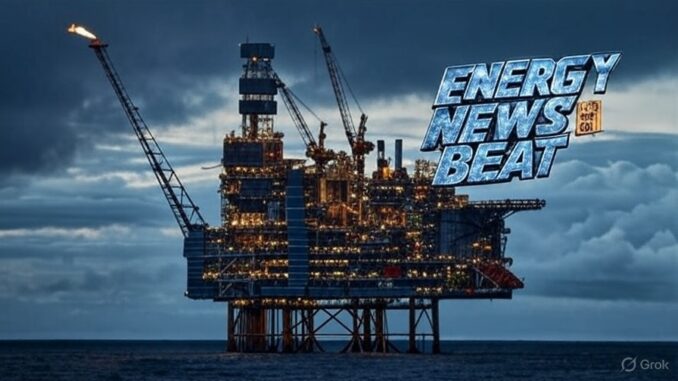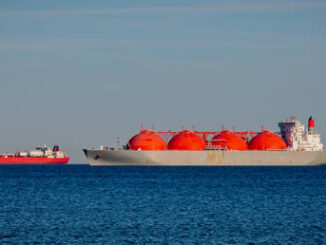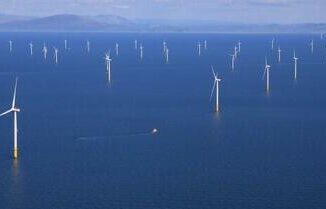Germany has taken a bold step to bolster its energy security by approving a controversial agreement with the Netherlands to drill for natural gas in the North Sea, specifically off the coast of Borkum Island. This decision, aimed at diversifying energy sources in the wake of geopolitical tensions and reduced reliance on Russian gas, has sparked both optimism and environmental concerns. The project, led by Dutch company One-Dyas, could yield up to 13 billion cubic meters of natural gas annually, equivalent to roughly 15% of Germany’s gas consumption in 2024. Below, we explore the details of this development, Germany’s energy mix, the potential for gas transportation, and the implications for Europe’s energy landscape.
The German leaders are facing a significant time constraint. Their economy is facing its third year in a row of negative GDP growth, and companies are shutting down factories and relocating to find cheaper energy.
Germany’s Energy Mix: A Balancing Act
Germany’s energy mix is a complex blend of renewables, fossil fuels, and nuclear power (until its phase-out in 2023). According to the Federal Ministry for Economic Affairs and Climate Action, in 2024, Germany’s primary energy consumption was roughly:
- Renewables: 46% of electricity generation (wind, solar, biomass, and hydropower), with offshore wind playing a growing role.
- Natural Gas: 25% of total energy consumption, critical for heating, industry, and power generation.
- Coal: 26% of electricity generation, though its share is declining due to climate goals.
- Oil: 35% of total energy consumption, primarily for transport and industry.
- Other: Minor contributions from waste-to-energy and other sources.
Natural gas remains a cornerstone of Germany’s energy system, serving as a “bridge fuel” to balance intermittent renewable sources. The loss of Russian gas supplies via Nord Stream 1 and 2, which once accounted for over 50% of Germany’s gas imports, has forced the country to seek alternatives. Liquefied natural gas (LNG) terminals, such as the one at Mukran, and now domestic offshore gas, are part of this strategy. The Borkum project aligns with Germany’s goal to secure stable gas supplies while transitioning to net-zero by 2045.
North Sea Gas Drilling: The Borkum Project
The German cabinet’s approval of a bilateral agreement with the Netherlands enables One-Dyas to extract gas from a cross-border reservoir in the Wadden Sea, a UNESCO World Heritage Site. The project, known as Gateway to the Ems (GEMS), has been in development since 2019 but faced delays under former Economy Minister Robert Habeck, a Green Party politician, due to environmental concerns. Current Economy Minister Katherina Reiche, from the Christian Democrats (CDU), argues that the project will strengthen the European gas market while incorporating measures to reduce environmental impact.
The field is estimated to hold up to 13 billion cubic meters of natural gas per year, a significant volume that could cover roughly 15% of Germany’s 2024 gas consumption (approximately 86 billion cubic meters). Drilling is set to begin as early as August 2025, pending final approval from Lower Saxony’s state authorities, which have already greenlit operations.
To mitigate environmental concerns, One-Dyas has committed to powering drilling operations with electricity from a German offshore wind farm, reducing CO2 emissions. However, environmental groups like Environmental Action Germany (DUH) warn of potential harm to the Wadden Sea’s biodiversity and have filed legal challenges, arguing that the project risks “fossil fuel industrialization” of a protected marine zone.
Transporting Gas from the North Sea to Germany
Transporting gas from the Borkum field to Germany involves a combination of offshore and onshore infrastructure, leveraging existing and planned pipelines. The process is as follows:
- Offshore Extraction and Processing: Gas will be extracted from the field via a Dutch platform operated by One-Dyas. Initial processing will occur offshore to remove impurities and prepare the gas for transport.
- Submarine Pipeline: The gas will be transported via a submarine pipeline from the drilling site to the Netherlands, approximately 10 kilometers from Borkum Island. This pipeline will connect to the Dutch gas grid, which is well-integrated with Germany’s infrastructure.
- Onshore Transmission: From the Netherlands, gas can enter Germany through existing cross-border pipelines, such as the NOGAT or Nord Stream Interconnector systems, which link Dutch and German gas networks. The gas will then feed into Germany’s extensive onshore pipeline network, operated by companies like Open Grid Europe (OGE), for distribution to industrial hubs, power plants, and households.
- Alternative Routes: If additional capacity is needed, gas could be routed to Germany’s LNG terminals (e.g., Wilhelmshaven or Mukran) for regasification and distribution, though this is less likely given the direct pipeline option.
Germany’s gas infrastructure is robust, with over 500,000 kilometers of pipelines and storage facilities capable of holding 24 billion cubic meters. The Borkum gas will likely flow through the H-Gas network, which handles high-calorific gas suitable for industrial and residential use. The project’s proximity to existing infrastructure minimizes the need for new pipelines, reducing costs and environmental disruption.
Implications and Challenges
The Borkum project is a strategic win for Germany’s energy security, reducing dependence on volatile global LNG markets and providing a domestic gas source. It also strengthens ties with the Netherlands, a key energy partner. Economy Minister Reiche emphasized that the project will “benefit the entire European gas market,” potentially stabilizing prices and supply for neighboring countries.
However, the project faces significant hurdles:
- Environmental Opposition: Activists argue that drilling in the Wadden Sea violates Germany’s climate commitments and threatens marine ecosystems. Ongoing lawsuits could delay or derail the project.
- Political Dynamics: The approval reflects a shift from the Green-led policies of the previous government to the more pragmatic approach of the CDU-SPD coalition. This could spark domestic political tension.
- Long-Term Viability: One-Dyas has pledged to extract gas only as long as demand persists, aligning with Germany’s climate neutrality goals. However, critics fear the project could lock in fossil fuel reliance, delaying the renewable transition.
Conclusion
Germany’s approval of North Sea gas drilling off Borkum Island is a pragmatic response to the energy challenges posed by the loss of Russian gas and the need for reliable supplies. The project, with its potential to deliver 13 billion cubic meters of gas annually, leverages Germany’s existing pipeline infrastructure and strengthens its energy partnership with the Netherlands. While environmental concerns and legal challenges loom, the move underscores Germany’s commitment to balancing energy security with its climate ambitions. For now, the Borkum project is a critical piece of Germany’s energy puzzle, ensuring stability as the nation navigates the complex path to a net-zero future. For me, it signals their desperation as they have also filed legislation to ban the remaining Nord Stream pipeline from coming back online. Their leadership is trying to survive, and let’s see how this plays out.
Sources: Offshore Technology, Bloomberg, Reuters, Clean Energy Wire, Federal Ministry for Economic Affairs and Climate Action






